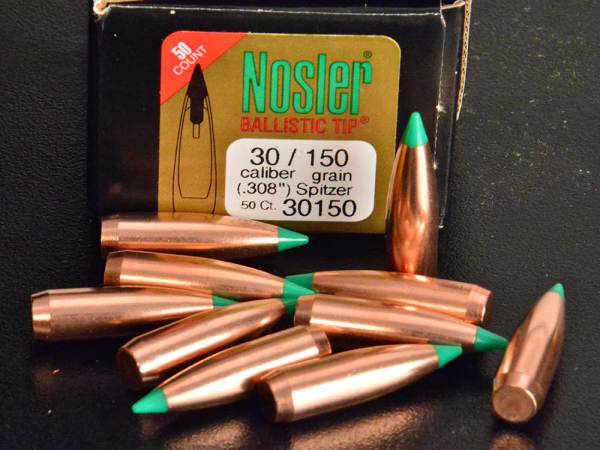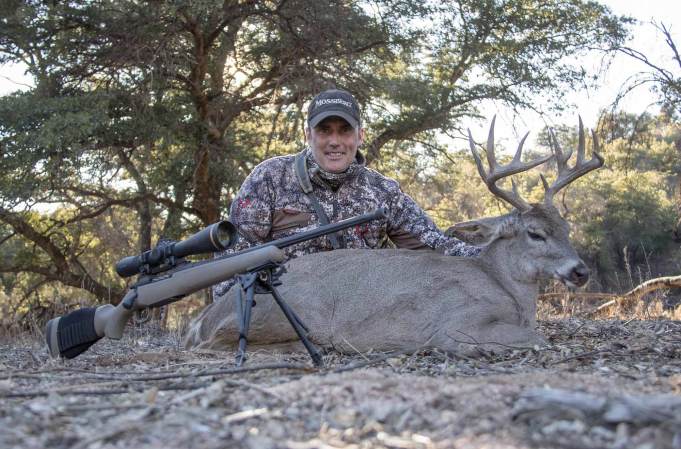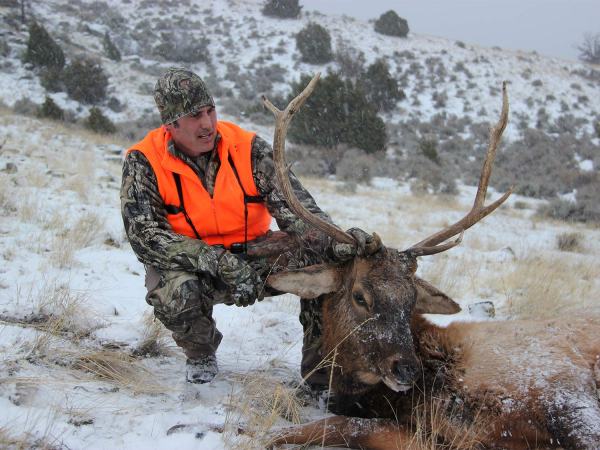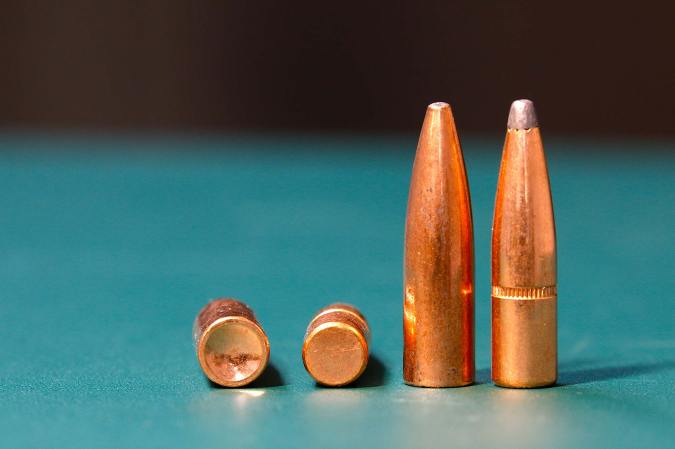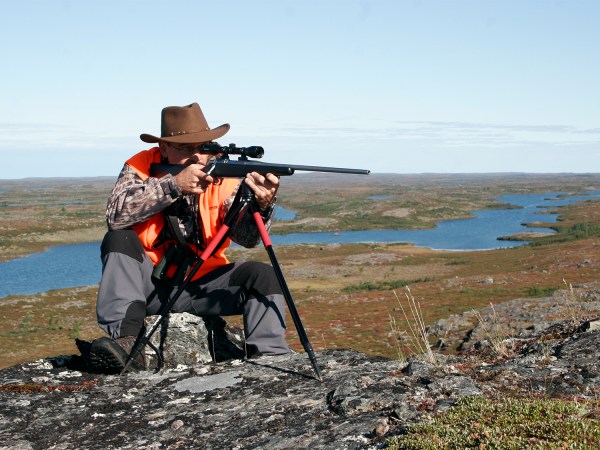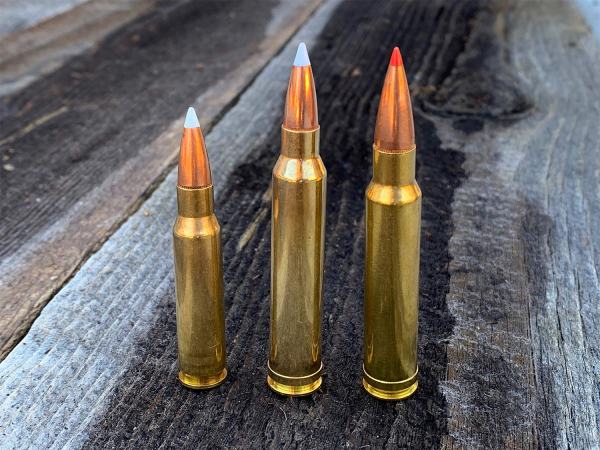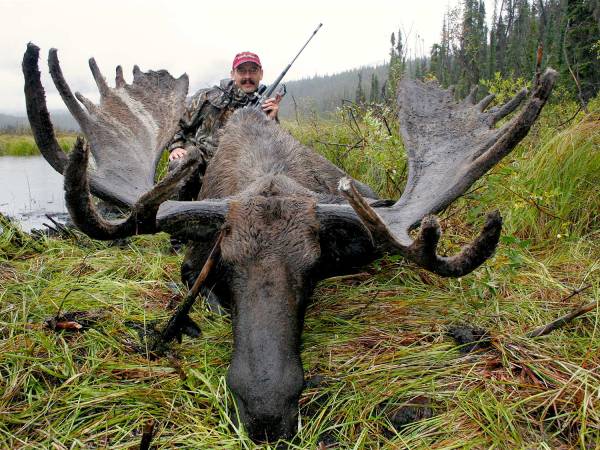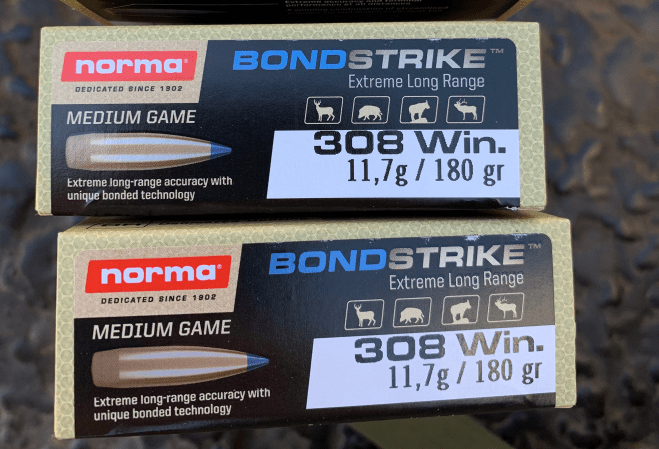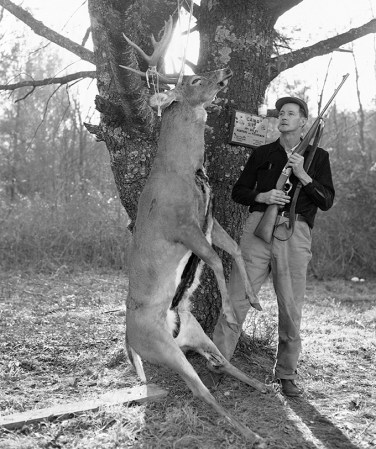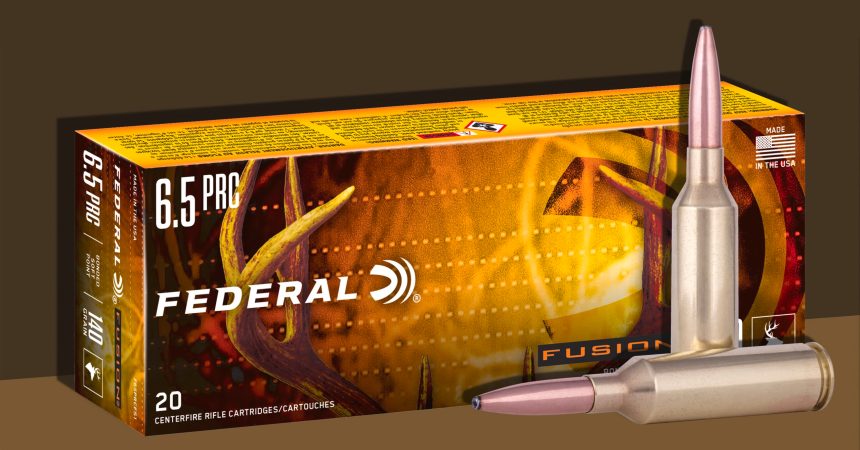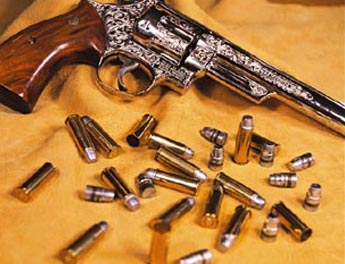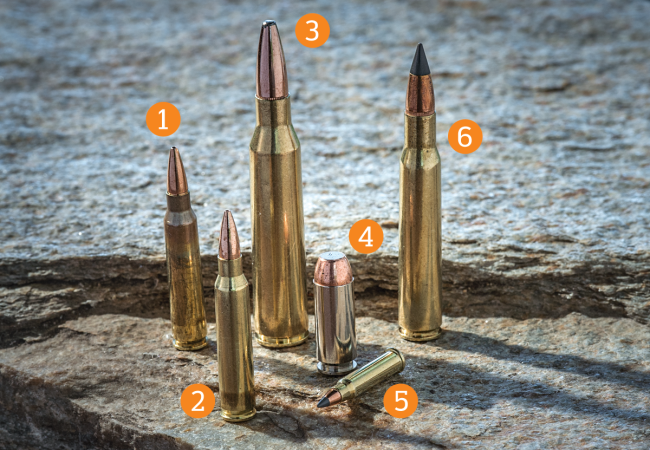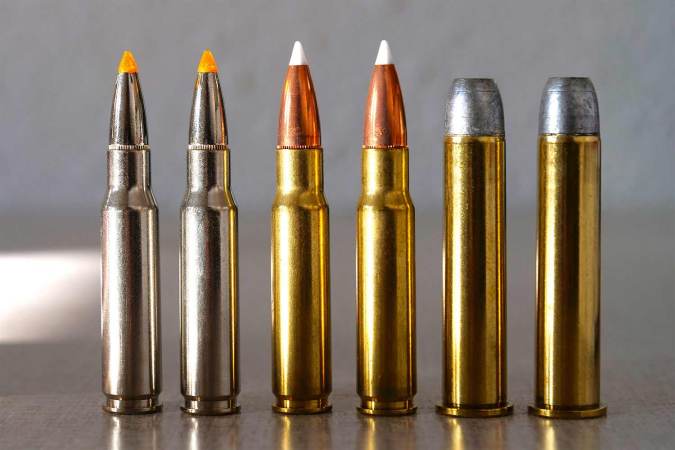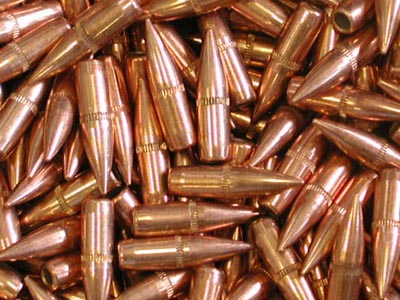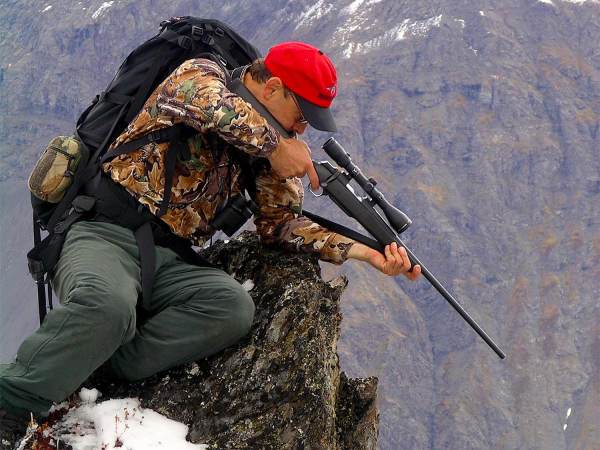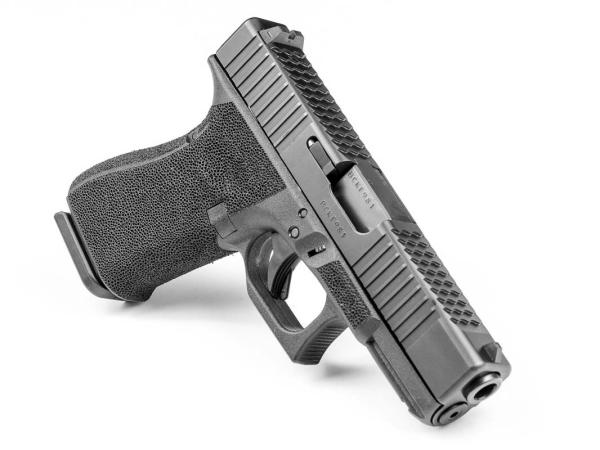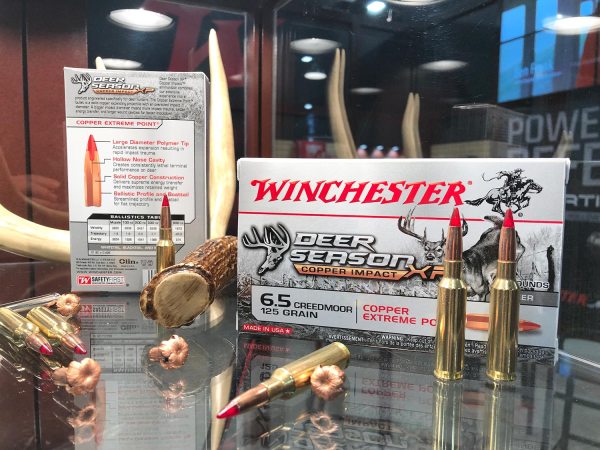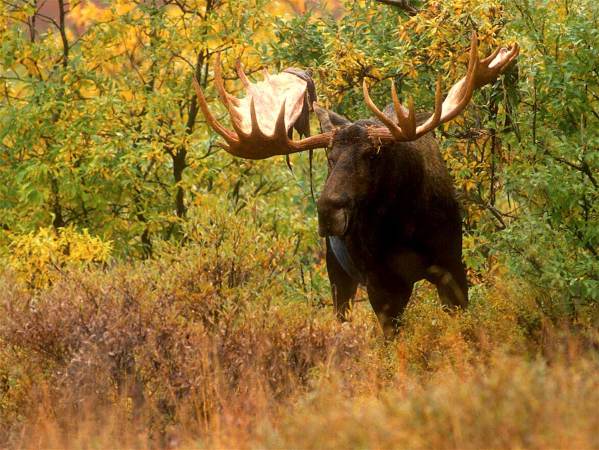We may earn revenue from the products available on this page and participate in affiliate programs. Learn More ›
Hunting bullets do two things: They fly to your target and they damage it. To fly consistently true, they must be uniform. To fly flat and retain lots of killing energy at long range, they must be sleek and relatively heavy, but not so heavy that you can’t push them fast.
You can shoot big game under a wide variety of conditions without knowing any more than this about bullets. Just buy factory loads with softpoints in the middle of the weight range for their diameter.
But hunters these days talk often about controlled-expansion bullets designed to increase penetration and to retain their weight. And some deer hunters are beginning to sneer at ordinary hunting bullets that have been downing game for decades. There are claims that the old-timers don’t have what it takes to ensure clean kills, or at least aren’t as deadly as newer, more expensive bullets built to resist breakup in tough going. True or false?
ANATOMY OF A BULLET
Actually, the expansion of all hunting bullets is controlled by their design. Bullets made for shooting prairie dogs with a .22-250 have very thin jackets scored at the front to ensure explosive upset on impact. Softnose bullets for deer hunting have thicker jackets so they don’t come apart on contact but penetrate the deer’s vitals more or less intact.
Bullets that are designed for heavy game like elk are commonly called “controlled-expansion” (CE) bullets. To reduce fragmentation they might have a midsection dam of jacket material (Nosler Partition, for example); thick, ductile jackets tightly bonded to the lead core (Trophy Bonded); a solid copper construction (Barnes X); or a hard heel section and softer nose (Speer Grand Slam). Other CE bullets feature a combination of these designs (Swift A-Frame, Norma TXP and Winchester Fail Safe).
The recent availability of many CE bullets in factory ammo has given hunters almost too many choices, made all the more confusing when manufacturers attach other labels to the boxes (Winchester Supreme XTP III, Federal Premium Cape-Shok, Remington Premier Safari). And this before you even identify the cartridge or the weight of the bullet.
Bullets designed for deep penetration in big game are not, as a rule, a more accurate alternative to their standard softpoint, hollowpoint and polymer-tipped brethren. That was true back when Remington announced its Core-Lokt–even company engineers admitted it! They were quick to add, though, that Core-Lokts (like most CE bullets today) shoot more than accurately enough for big-game hunting. No deer hunter would choose a bullet that shot into an inch but performed unreliably in game over a bullet that printed 2-inch groups but opened perfectly and drove deep every time.
But there’s another consideration. The ordinary Sierra softnose and hollowpoint hunting bullets, Hornady softpoints and Nosler Ballistic Tips, which typically shoot small groups, also deliver lightning-quick kills on deer-size game. They dump all their energy explosively, opening huge cavities in the middle of the chest rather than zipping through, trailing a narrow cavity. A controlled-expansion bullet is best if you get a quartering-away shot or must smash the point of the shoulder to land your .243 bullet in the vitals. But more often than not, you’ll have the neat and humane option of a shot through a deer’s forward ribs.
DON’T SELL SOFTPOINTS SHORT
Standard softpoints also suffice for bigger game. Several big bull elk have been felled in front of me by 130-and 140-grain bullets from .270 and 7mm rifles. Only one elk of nearly 100 I’ve seen shot did not respond to a bullet through the front slats. That softpoint came apart prematurely in the ribs.
The advantage of a CE bullet is its versatility. It will take game that gives you an easy shot but is there for the tough going when you need it. That’s especially comforting when you’re after heavy game like elk or moose in the thickets, where shooting is close and oblique angles more likely. The closer the animal, the more you gain from controlled upset, especially with fast-stepping bullets. High impact speeds put more stress on bullet jackets and more riveting force on cores. Core-jacket separation and fragmentation is much more likely up close than after distance has sapped some of the bullet’s speed. Try this: Make a fist and press as hard as you can against a brick wall. You may abrade your knuckle skin slightly. Now, think of what you’d suffer if you punched that wall with your fist. Bullets undergo similar damage at high-speed impact. The damage affects not only channel depth but diameter, and can alter the course of the bullet too.
Incidentally, CE bullets can’t delay upset. They can only limit its progression. Whether you’re shooting a varmint bullet or a Trophy Bonded into a deer, expansion begins on contact, because that’s when the bullet gets slammed by its impact with the deer. After that collision, the bullet decelerates as it plows through tissue, which in some cases offers enough resistance to cause mushrooming. But if impact doesn’t initiate upset, it certainly won’t begin inside the animal. So the oft-used description “fast-opening” as applied to bullets isn’t quite accurate. All expanding bullets open very near entry; differences in design show in the wound channels that reflect built-in limits on the degree and rate of bullet expansion.
PERFORMANCE VARIES
Expect greater penetration and weight retention from CE bullets, but not always in the same slug. Nosler’s Partition drives deep, but often loses most of its nose in tough going, so weight retention averages 60 percent. The Swift A-Frame and Trophy Bonded commonly give you 90 to 95 percent retained weight. But their beautiful mushrooms boost drag and frequently result in shorter wound channels. Winchester’s Fail Safe and the Barnes X yield exceedingly deep penetration and near-100 percent weight retention. But their solid-copper noses don’t open as broadly as those of most leadcore bullets, or cause the grenade-like damage to the vitals that a Partition losing its nose inflicts.
Some hunters prefer a bullet that guarantees an exit wound for easier trailing. I like bullets that dump all their energy inside, winding up just under the far-side skin. Either way, good shot placement will give you a quick kill. Bullet construction has never mattered as much as marksmanship.
If you’re satisfied with the accuracy of your big-game bullet, and it kills for you, there’s really no need to change. If you’re going after bigger, tougher game and there’s a good chance you might not be presented with a shot into the forward ribs, a controlled-expansion bullet can pay off.
When you need deep, straight-line penetration, the additional cost of a CE bullet is immaterial. What would you pay to ensure that your bullet got through the vitals of a quartering bull elk the last day of the season?
SLING UP AND HIT
Control rifle movement with a sling that has a shooting loop that runs from the front swivel to encircle your left arm (for a right-handed shooter) just above the triceps. Snug the loop with a keeper, which is a leather ring that slides on the sling. The shooting loop adjusts for length. A separate adjustment controls sling length. When you’re in shooting position, the loop (front swivel to arm) must be taut, but the tail of the sling (between arm and rear swivel) must be loose. Then the loop will pull the rifle straight back while transferring its weight to the big muscles in your shoulder. A sling with a tight tail pulls the butt out of your shoulder while tugging the toe of the stock sideways, rotating the rifle.
Use a shooting sling from prone, sitting and kneeling positions. It does not work well off-hand because there’s no anchor for your opposite arm. To don a sling, give the loop a half-turn out, slip your arm through it, duck your hand around the sling so it lies flat against your wrist and brace the rifle butt against your shoulder. If you struggle to get the butt to your shoulder, the loop is too short. If the sling has any slack up front, the loop is too long.
A strap can help steady your rifle, although not as effectively as a sling does. Poke your left arm between strap and rifle, then wrap your left wrist once around the strap’s front end, presuming there is enough slack to do so.
SNAKE ID ANSWERS From page HB6
1. D. Rubber boa 2. E. Eastern hognose 3. A. Corn snake 4. C. Ribbon snake 5. F. Black rat snake 6. B. Rainbow snake

